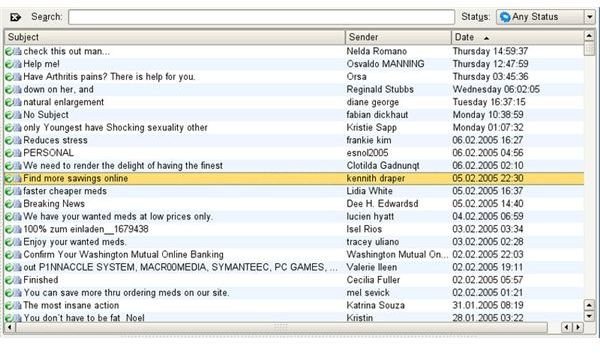What is the Difference Between Spam and Phishing?
With our email inboxes overflowing, and countless emails that waste our time in one way or another, the supposed convenience of email is under threat. Whether the messages are attempts to sell us something, or worse attempts to steal from us, there is no doubt that we would rather not have to wade through them to find legitimate messages. In this article we’re going to take a look at the difference between plain old spam and the rising tide of phishing scams.
What is Spam?
Spam email, also known as junk email, is generally unsolicited bulk email which is trying to sell you something. It is estimated that as much as 80% of all the email sent is spam. That depressing statistic shows you just how much wastage spam creates. If you have never responded to spam (the vast majority of people don’t) then you may wonder why these people bother. The truth is that even if only a tiny percentage of that bulk email gets a response they are able to turn a profit because the cost of sending it is so low.
What is Phishing?

Phishing scams are generally an attempt to get you to hand over sensitive personal details. They often appear as emails or messages from a legitimate company and request that you send personal details in reply or click a link in an email to be taken to a website where you will be asked for log in details. These website fronts are false, although they may look like the real thing, and if you input your details then the scammers can use them to rob you.
How did they get my email address?
Spammers harvest email addresses from various sources. They pinch them from websites, forums, social media websites and unscrupulous marketers. Sometimes your email address is sold as part of a list by an organisation, sometimes it is stolen by someone hacking into a server. There is little you can do to prevent spammers from getting hold of your email address. Phishing scammers get email addresses in exactly the same way.
Guarding Against Spam and Phishing
It is a good idea to have a spam filter on your email inbox which will automatically identify spam and prevent it from being sent on to you. You do need to be careful though because spam filters are not perfect and it is possible that a legitimate message will be marked as spam. It is worth reviewing your spam filtered emails occasionally (don’t open them just check the subject line) so you can spot any real messages which have been flagged. It is also worth Reporting Spam and Junk Email.
With phishing you should use a phishing filter on your internet browser which will inform you if you visit a false website. For more tips on avoiding being caught out by a phishing scam check out the article How Does Phishing Work?
Spot the Difference
To conclude we can generally spot the difference between phishing and spam quite easily. Phishing is an attempt to steal personal details from you and will generally take the form of a false message or email from an organisation you trust. Spam is generally a sales pitch of some kind. Both should be avoided as much as possible.
